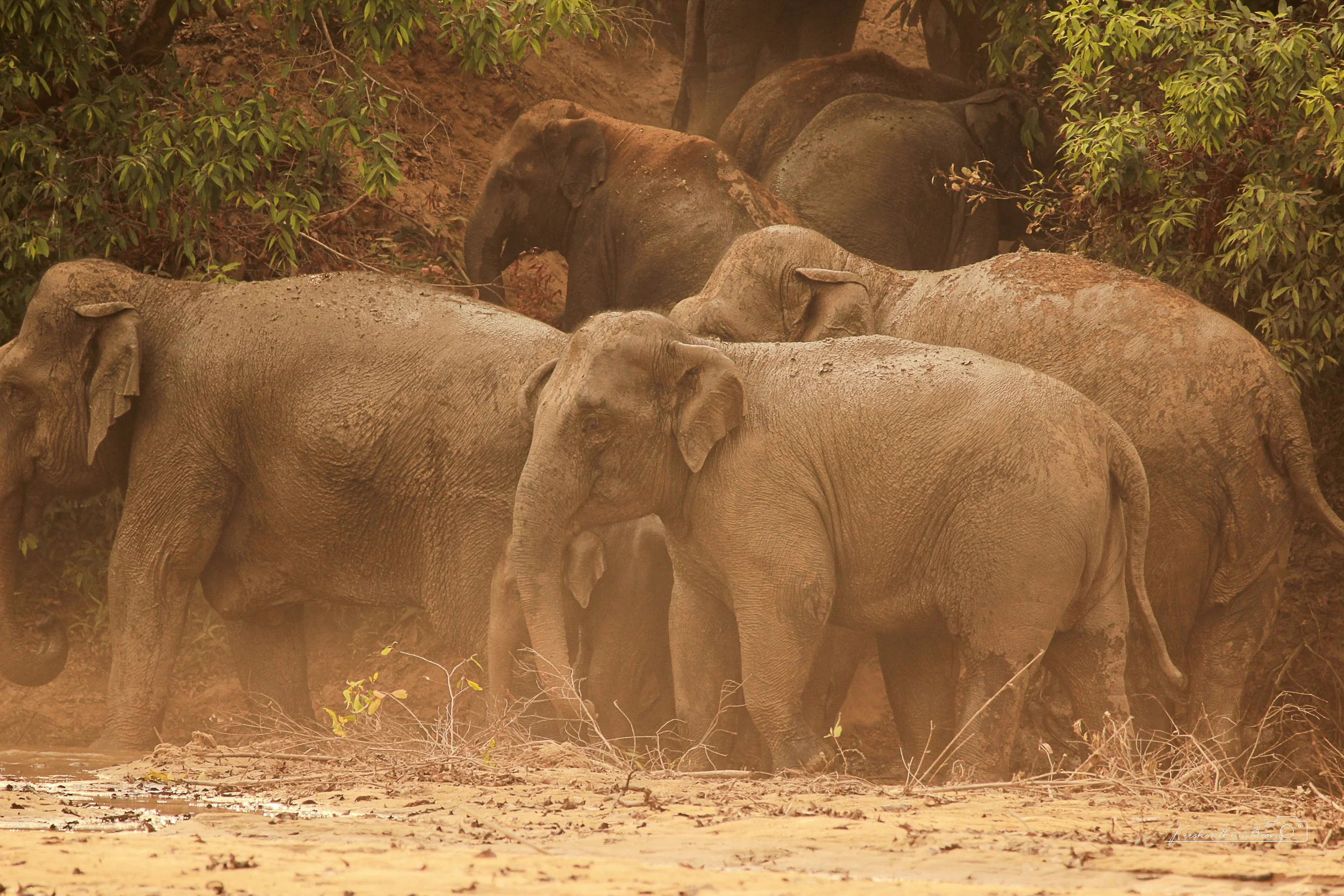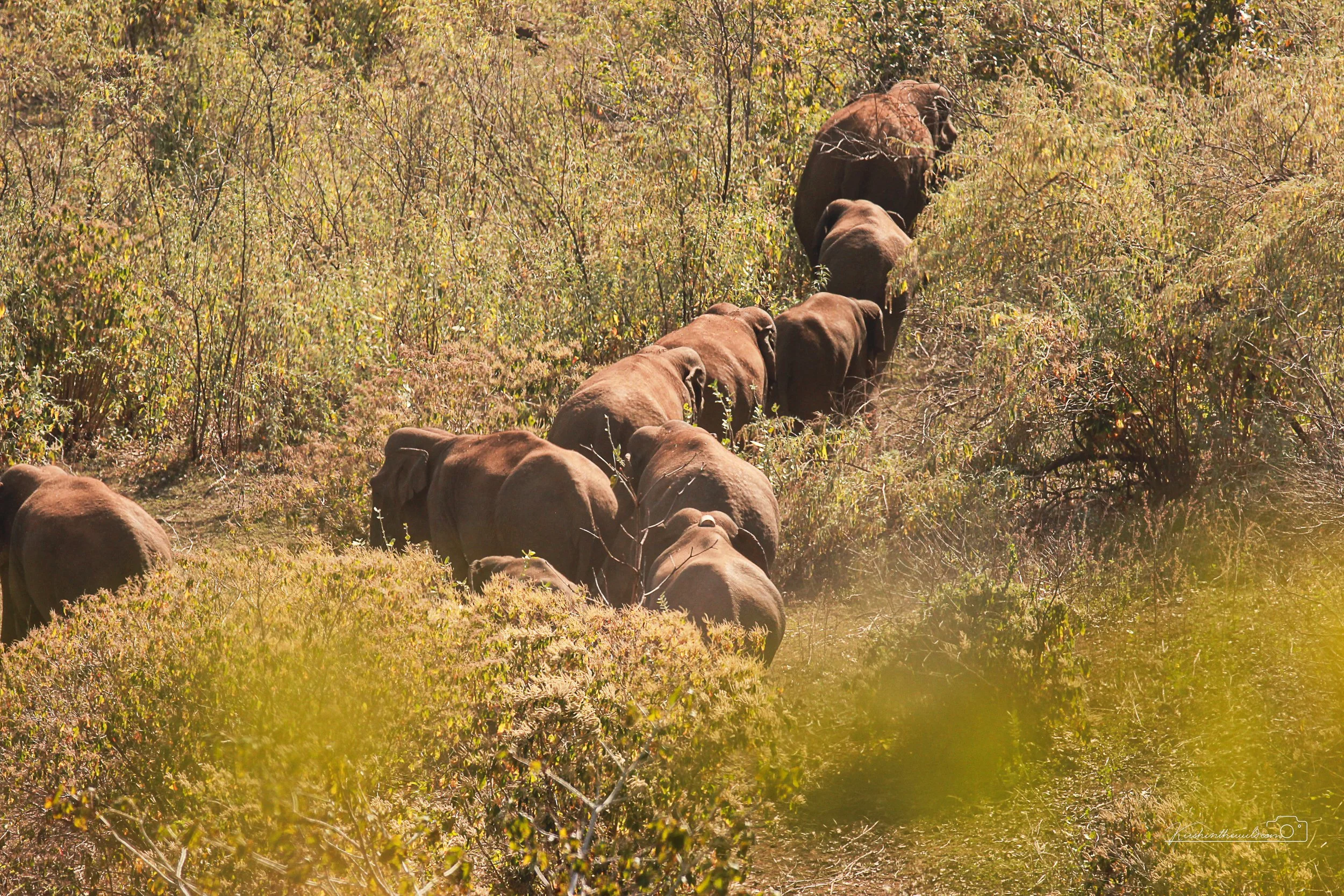Matriarchs and Memories - Elephant Day 2025
Over the years I have spent in the field studying elephants in India, I have come to recognise that some encounters stay with you for reasons beyond the obvious. They are not always about rare behaviour or perfect conditions. Often, they are about a single moment. In the Asian elephant’s world, leadership is not a display. It is a steady presence, built over years of navigating a changing landscape. The older females, sometimes called matriarchs, are the ones that decide when to move, where to cross, and how to respond to risk. In a country where forests are increasingly fragmented and human pressures constant, those decisions can determine the survival of the herd.
This piece is about three such encounters. The first is with Wave Ear, a calm yet watchful female in Surguja who showed me what quiet authority looks like at the edge of a river. The second is with Gautami on the high plateau of Mainpat, a reminder that sometimes the most meaningful sightings happen in silence. The third is a full-moon night at Vanghat Lodge, when a herd passed through a corridor it had used for decades.
Ambikapur Herd – The Gentle Sentinels
The first female elephants I came to know in Surguja were individuals we called Wave Ear, Torn Ear and Big Mama named for the distinctive folds in ear and size. They were one of the most gentle and composed elephants I have ever observed, yet every movement radiated alertness.First time I saw them at a river in Surguja. Wave Ear - The name coming from the slight fold on her right ear that would catch the light whenever she turned her head. She was watchful, deliberate, gentle in a way that made you slow your own breath when you saw her move. One evening I saw Wave Ear descend the slope, placing each step with care. One by one the herd followed. She stood at the edge of the river, trunk curling into the current, head moving to see one end of the bank to the other.
Gautami – The Plateau Matriarch
Mainpat will always remind me of Gautami. Her herd moved through that plateau, the air thin and cool, the grasslands stretching far under a winter sky. We searched for hours along the slopes before the first shape appeared in the thick bush. The glint of a satellite collar caught the sun for a moment, then disappeared again. We sat on a rock and watched them move, barely visible through the cover, their shadows shifting against the pale gold of the shrubs. It was not the kind of sighting where you could study their body condition or read their expressions. It was the kind that leaves a place imprinted in you, the sound of them moving, the smell of the plateau grass, and the surroundings.
Spot the Collar
Buddha Purnima at Vanghat
It was the night of Buddha Purnima, and the full moon cast a bluish tinge on the flooring. The Ram Ganga and the valley shimmered under the celestial glow, appearing ethereal in the quiet of the night. The brown fish owl and the nightjars sang softly, their calls blending seamlessly with the murmuring of the flowing river. After a long, sunny day, the cool hill breeze brought welcome relief to the valley. The silence of the night was abruptly pierced by the sharp sound of branches breaking at multiple places. As the rustling of shrubs grew closer, the wind carried a distinct, musky fragrance—an unmistakable sign of a large herbivore nearby. It was none other than a herd of elephants, using the corridor near Vanghat Lodge as they had for decades to traverse the landscape during the summer months. Earlier in the evening, I had casually mentioned to Mr. Ghosh, the owner of Vanghat Lodge, to keep the rooms locked, as the elephants might be around. Now, as we both listened intently to the rhythmic trampling of the herd, we caught glimpses of their broad backs illuminated by moonlight. They moved gracefully through the riverbed, disappearing into the undergrowth, their trunks occasionally visible through gaps in the foliage. Gentle rumbles and the occasional trumpet echoed through the valley as they foraged peacefully, taking advantage of this familiar, safe passage. We sat within the confines of the lodge, separated from these magnificent creatures by nothing more than a thin solar-powered fence. Whispering to each other, we marveled at the sight before us. One female elephant, in particular, ventured remarkably close to the lodge’s gate. She paused, lifting her trunk high as if catching a scent carried by the breeze. For a brief moment, she held her position, then slowly lowered her trunk in a gesture that felt almost like an acknowledgment—a silent exchange between species.
Kind Matriarch from Corbett
Camera traps are a key part of our work. Over time, I have learned one thing - if I see fresh elephant footprints on my way to check a camera, I already know I am not going to find the camera where I left it. At best, I might find the memory card lying somewhere in the vicinity. Without an elephant-proof case, the odds are not in your favour. That is why this particular day, or rather night was a surprise. Not only was the camera still in place, it had recorded footage of a herd passing through at night. In the clip, a female approaches the camera directly. She sniffs it, handles it lightly with her trunk, and then simply moves on. No signs of aggression, no attempt to tear it apart. It seldom happens like this. Usually, curiosity turns into destruction within seconds. But here was a moment of restraint. Watching that female interact with the camera reminded me that even in small encounters like this, elephants show intent and choice.



